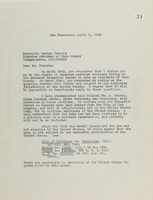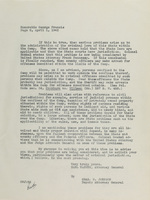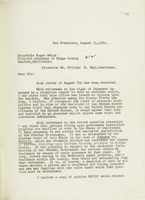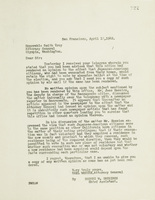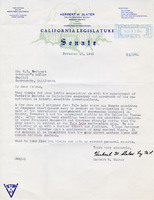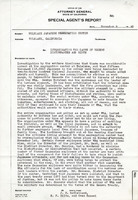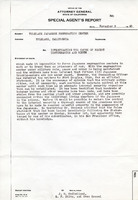INCARCERATION
Even though aid from the War Services Bureau ceased once the Japanese arrived at the incarceration camps, there were still aspects of life with which the State was concerned.
Education
Since many of the people incarcerated were children, the Department of Education provided schooling in the camps. Pictured is the front cover of the Health and Physical Education curriculum at Manzanar.
Voting
The issue of absentee voting also arose after incarceration. A request for an opinion was made of then-Attorney General Warren on whether incarcerated Japanese had any right to vote using an absentee ballot for the county from which they had been removed. According to the Attorney General records, no opinion was ever issued.
Tule Lake
An incident that took place on November 1, 1943 was instigated by the residents of Tule Lake incarceration camp, near the California-Oregon border. The official reports by Owen M. Kessel, Special Agent of the Attorney General’s office, describe these events as “a strike on work gangs, by impossible demands for luxuries and by threats of violence upon the WRA [Works Progress Administration, a program to carry out public works projects].” News articles overinflated the story, calling it a riot or an attack. County officials from near Tule Lake corresponded with Earl Warren, requesting that the army maintain control of this camp.
